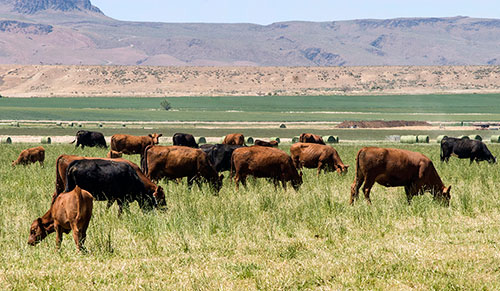
Earlier this month I took off my dairy hat and went to the 2015 National Cattle Industry Summer Conference in Denver, hosted by the National Cattlemen's Beef Association (NCBA).
The view of our industry from that perspective was both interesting and encouraging, and I came away with several strong impressions:
1. Dairy and beef producers are the cattle industry and they face its challenges together. They both worry about all of the same things, such as foot and mouth disease, food safety, veterinarian-client-patient relationships, the impending new veterinary feed directive, beef carcass quality, antibiotic drug usage, testing, residues, regulations and resistance, country of origin labeling, exports, trade agreements and embargos, consumer perception and demand, market promotion, animal rights activists, cow care, water, land use, the Environmental Protection Agency, and environmental regulations of all kinds.
2. The industries' representatives, including NCBA and National Milk Producers Federation, are working together more than ever.
3. Dairying still frustrates the beef industry with a too-high incidence of antibiotic residues and injection site issues, but it knows dairy is getting better. And it is very happy that NCBA will be lead author of the beef quality assurance chapter in the 2017 update of the National Dairy FARM (Farmers Assuring Responsible Management) program.
4. The beef industry really appreciates what dairying brings to the table these days in terms of meat volume. Currently, approximately 20 percent of all beef production in the U.S. comes from dairy animals.
4. Sad to say, the country's immigration problem may be hopeless. When I asked Colin Woodall, NCBA Vice President of Government Affairs, if we will ever see the situation resolved he said, "I don't think so." When I said I meant during our lifetime he answered, "I know you did."
5. The size of today's beef industry – it is roughly one-third smaller than in 1975 – probably isn't going back to those high watermark days, said Chase Adams, NCBA Director of Communications. Instead, he thinks recovery will be modest to moderate, and where the beef industry is today may more or less be its new normal.
6. The message from that is, while today's spectacular dairy cow cull and bull calf prices may not stay where they are, they seem very unlikely to go back to where they were a decade ago.

The author has served large Western dairy readers for the past 38 years and manages Hoard's WEST, a publication written specifically for Western herds. He is a graduate of Cal Poly-San Luis Obispo, majored in journalism and is known as a Western dairying specialist.







